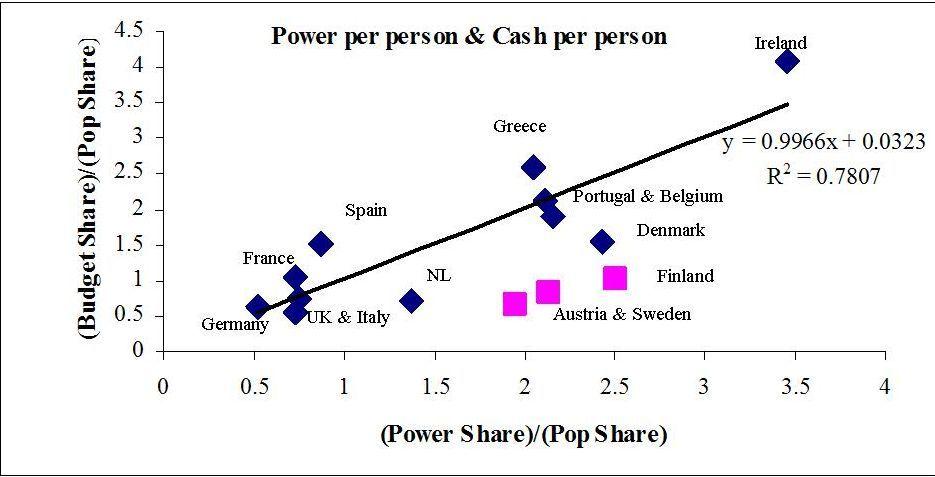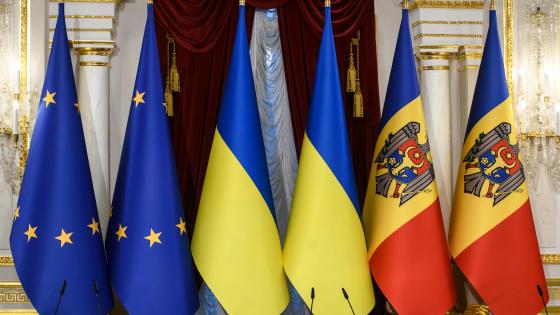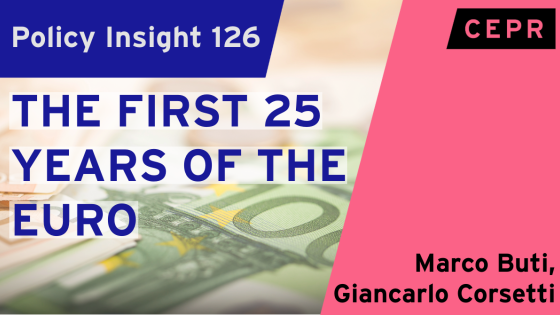Poland is fighting tooth and nail. They oppose a proposal that would move the EU away from its status-quo Council of Minister voting rules (set up in the Treaty of Nice) and towards a system that would reallocate power to the biggest members, especially Germany (and Turkey when it joins). The proposed reform – the double majority scheme – was first put into the Constitution by Giscard d’Estaing during the European Convention with almost no public discussion. This is a problem.
Recall that at the Convention, new member states like Poland were in the room but their voices were not allowed to prevent a consensus. The two majority thresholds were re-jiggered under the Irish Presidency in late 2004, but this was done in a crisis atmosphere and with little systematic analysis of the consequences – certainly none of it in public.
Given this history, it is easier to understand why the Poles – the only big nation among the newcomers – believe they are arguing from the moral high ground.
This column discusses some evidence that shows voting rules really do matter.
Measuring power empirically
One cannot measure a nation’s power in EU decision-making directly, but the exercise of power does leave some ‘footprints’ in the data. Budget allocations are one manifestation of power that is both observable and quantifiable. This observation is the basis for empirical evidence on the relevance of power-measures in the game theory literature on voting.
To understand how formal measures of power could be linked to the budget, a quick tour of the EU budget process is essential.
The EU budget process briefly
The EU’s annual budget must be passed by both the Council of Ministers and the European Parliament. They are, however, constrained by a 7-year budget plan called the ‘Financial Perspective’ (the current one was set under the British Presidency in December 2005). The Financial Perspectives require unanimity in the Council, but the annual budgets are passed on the basis of qualified majority. For both the Financial Perspectives and the annual budgets, Parliament’s decision-making is on the basis of a simple majority. As it turns out, the Parliament does not matter from a national power perspective. Since the Parliament’s majority threshold (50%) is much lower than the Council’s (74%) and the allocation of Members of European Parliament per nation is similar to the allocation of votes per nation in the Council, any coalition of nations that can pass a budget in the Council can also pass it in the Parliament. For this reason, I focus solely on vote shares in the Council of Ministers. (Parliament matters but not for the national allocation of EU cash.)
Muscles in Brussels = cash in the pocket
About 80% of Council decisions are made on the basis of majority voting. Since the Council decides many issues each year, and members do not care dearly about all of them, countries tend to trade their votes on issues that they view as minor in exchange for support on an issue that they view as major, even if the two issues are totally unrelated. This sort of activity is referred to by the colourful names of ‘back scratching’ and ‘horse trading’.
Citizens in EU nations, or at least some citizens, benefit when EU money is spent in their district. Successful politicians, responding to the desires of their citizens, use their political clout to direct money homewards. For example, suppose that countries ask for a little ‘gift’ each time they find themselves in a position that is critical to a winning coalition. In the data, the ‘gift’ ends up as EU spending, but the actual mechanism could be subtle, say a more favourable treatment in the allocation of EU subsidies to hillside farmers, a more generous allocation of milk quotas, or inclusion of reindeer meat in the CAP’s price support mechanism. In this light, it seems natural that a country’s power-measure would equal its expected fraction of all special gifts handed out. If one goes to the cynical extreme and views the whole EU budget as nothing more than a pile of ‘gifts’, then power-measures should meet the EU’s budget allocation perfectly. If high-minded principles such as helping out disadvantaged regions also matter, then the power-measure should only partially explain the spending pattern.
As it turns out, Council vote shares go a long way towards explaining the EU budget allocation. The horizontal axis of the chart plots a measure of the ‘bias’ in each nation’s power-per-person; specifically, it plots the ratio of each nation’s share of Council votes to its share of EU15 population; if votes were allocated strictly according to population, all of these would be 1.0. Members with ratios below 1.0 have inferior power-per-person.
The vertical axis plots a measure of the bias in each nation’s receipt-per-person. Again, to put everything on a common scale, the precise measure we use is the ratio between the nation’s share of EU spending and its share of the EU population. As with the per-person power-measure on the horizontal axis, 1.0 on the vertical axis is the average receipts-per-person, taking the EU15 as a whole.
Each point indicates one EU15 member (the data is from the 2000-2006 budget period), but Luxembourg is not included. Luxembourg is an extreme case; its power ratio is 20.1 and its budget ratio is 10.8, so it is the ultimate example of the power = cash formula, but it is so extreme that it throws off the scale of the chart. One may wonder why the richest member of the EU gets the largest allocation of budget expenditure per person (most of which comes in the form of spending on EU institutions in the Grand Duchy). To me it is clear that Luxembourg politicians cleverly used their power in the Council over the decades to bring the bacon home.
There are two salient features in the chart. First, there is a distinct positive relationship between power-per-person and receipts-per-person. In other words, it seems as if politicians use their power in the Council of Ministers to direct EU spending towards their home countries.
The second feature is the fact that the EU members that joined in 1994 – Austria, Finland and Sweden – are far below the average relationship between power and spending. In other words, given their level of votes per person, the relationship between power and spending that one sees in the older members (the EU12) suggests that they should be getting more EU spending per person. Perhaps this reflects the fact that these newcomers have not yet learned how to work EU politics in their favour, or maybe they have not had time to do enough ‘back scratching’. We can also see that the UK is the nation that receives the least per person of all EU15 nations. It also has one of the lowest vote ratios, but not the lowest – Germany has that distinction.
There is also econometric evidence that votes affect the budget allocation. See, for instance, the 2005 CEPR Discussion paper by Heikki Kauppi and Mika Widgrén, published in Economic Policy.
Using the regression in the diagram, it would be simple to calculate roughly how much money Poland would lose by giving in to the double majority rule. (One has to switch to formal measures of power, like the Normalised Banzhaf Index to compare the Nice system with its Council votes to the Constitution’s with its double majority system.) But I won’t do the calculations – that would be putting a false precision on the theory. But even without precise numbers on the table, it is clear that Poland is fighting for more than pride. And those who assert that voting rules don’t matter have some explaining to do.
See Chapter 2 of the textbook, The Economics of European Integration, Baldwin and Wyplosz, 2005 on the budget process details and Chapter 3 on decision making including voting analysis.
The Banzhaf Index measures the likelihood that a given nation can break a winning coalition on a randomly selected issue. See Pandora’s (Ballot) Box, CEPR Policy Insight No. 5, Baldwin and Widgrén, June 2007 for details.



